After the Mount Tambora megavolcano erupted in 1815, the years that followed had weather that changed the world, as Mike Sutton explains
For much of humanity, 1816 was the year that summer never came. In the US, where there were blizzards in June and frosts in August, people called it ‘Eighteen-hundred-and-froze-to-death’. Across Asia and Europe, crop failures caused mass starvation and political turmoil. And while apocalyptic thunderstorms raged over the Alps a party of literary exiles diverted themselves with Gothic horror stories, one of which was to have an enduring impact on the public image of science.
All these events were triggered by the explosion of Mount Tambora, a volcano on the island of Sumbawa (now part of Indonesia). On 5 April 1815, it blasted around 100km3 of solid matter into the sky, covering Sumbawa and nearby islands with a blanket of dust and ash up to a metre thick. The explosion and its immediate after-effects caused about 70,000 fatalities. But millions more died in the years that followed, because Tambora’s sulfur dioxide emissions created atmospheric aerosol particles which disrupted global weather patterns, bringing famine – and Frankenstein (see box) – to the world.
Today, disturbances in the atmosphere’s chemical composition remain a threat to humanity and a source of controversy. Anxious citizens struggle to comprehend confusing statistics and conflicting opinions. Powerful interest groups hire lobbyists to challenge research results that might inconvenience them. Climate scientists are accused of spreading panic to gain bigger research grants, while political opportunists encourage hostility towards science in general. The situation seems alarmingly close to those images of angry peasants outraged at a mad doctor’s unholy experiments, which Mary Shelley’s Gothic novel (and its cinematic reincarnations) have made familiar to millions.
Europe’s earliest scientific account of a volcanic catastrophe was written by Pliny the Younger (Gaius Plinius Caecilius Secundus), who witnessed the destruction of Pompeii and Herculaneum when Mount Vesuvius erupted in AD 79. Pliny described the accompanying toxic fumes – which killed his uncle as he tried to rescue survivors – but their chemical composition remained unknown for centuries. Modern investigations have shown that volcanic gases include carbon dioxide, hydrogen chloride and hydrogen fluoride, but it is their sulfur dioxide content which particularly concerns us here.
Birth of the modern Prometheus
Along with the material effects of the eruption came a profound psychological shock. Storms sometimes made Europe’s skies so dark that office workers had to light candles at noon. And on brighter days, light scattered by tiny particles at higher levels generated spectacular red sunsets – recorded in paintings by (among others) JMW Turner in England and Caspar David Friedrich in Germany. Such events encouraged fears that doomsday was near, and thousands of penitents sought solace at churches and shrines. The exiled Lord Byron looked more sceptically at these phenomena, but his 1816 poem Darkness reflected chillingly on their possible import.
I had a dream, which was not all a dream.
The bright sun was extinguish’d, and the stars
Did wander darkling in the eternal space,
Rayless, and pathless, and the icy earth
Swung blind and blackening in the moonless air;
Morn came and went—and came, and brought no day,
And men forgot their passions in the dread
Of this their desolation …
Byron spent part of the non-summer of 1816 in Switzerland, renting a villa beside Lake Geneva. His companions there included the radical young poet Percy Shelley, Mary Godwin (Shelley’s teenage lover and future wife), and Mary’s stepsister Claire Clairmont, who was infatuated with Byron and later bore his child. Kept indoors by the dreadful weather, they began reading tales of the supernatural to each other and tried to invent more of their own.
Mary composed a story about a doctor who used the newly discovered powers of electricity to re-animate dead matter. An expanded version of the tale appeared in print two years later as Frankenstein; or, the modern Prometheus. The enduring popularity of Mary Shelley’s novel – and its subsequent theatre, film and television adaptations – has turned the story of Dr Frankenstein and his creation into a modern myth, focusing the mistrust and resentment that many of the general public feel towards science. Current debates about climate change and methods of alleviating it have tended to amplify this malaise.
The Earth’s biosphere has evolved ways of responding to this intrusion – alongside the more familiar carbon and nitrogen cycles, there is also a sulfur cycle. Sulfur dioxide emitted by volcanoes eventually descends as acidic rainfall, most of which ends up in the oceans (weathering of sulfate rocks also contributes to this phase of the cycle). The dissolved sulfate ions are metabolised by various lifeforms, including bacteria and marine plankton, and the sulfur in their body proteins can pass on up the food chain.
The decay of these organisms eventually generates volatile sulfides – including the dimethyl sulfide which contributes to the characteristic aroma of the ocean – while their solid remains accumulate to form mineral deposits rich in sulfides. The gaseous sulfides are rapidly oxidised in the air. Sulfide minerals can be locked in geological strata for millennia, though they may eventually undergo combustion through volcanic action. Both routes return sulfur dioxide to the atmosphere, at rates which vary as ecological or geological conditions change.
But this feedback cycle is not perfectly balanced. In earlier geological eras it was disturbed by periods of exceptional volcanic activity, and since the industrial revolution more sulfur dioxide has been entering the atmosphere through the combustion of fossil fuels. These emissions, though vast, have been relatively gradual in comparison with the sudden surge which came from the largest volcanic explosion in recorded history. Tambora is estimated to have released 60 million tons of sulfur into the atmosphere – six times the output of the 1991 Mount Pinatubo eruption, which was one of the largest (and most intensively studied) of the 20th century’s volcanic events.
Volcanic sulfur dioxide combines with oxygen and water vapour to make dilute sulfuric acid, most of which quickly descends as acid rain. Ice cores from Greenland and Antarctica reveal variations in sulfur precipitation over thousands of years. The relative quantities of oxygen isotopes in these samples also provide evidence of past weather, as the 16O/18O ratio in water evaporating from the oceans and then falling as snow varies according to the ambient temperature. Ice core data can be correlated with other climate information – historical records, studies of lake bed sediments, analysis of fossilised shells of sea creatures, measurements of tree ring density – to estimate the influence of volcanoes on the weather.
Tambora’s sulfur dioxide generated a major disturbance, seriously disrupting the Asian monsoon rains and producing freak weather on both sides of the Atlantic
Meanwhile, atmospheric studies show that although the Junge layer – a region approximately 10–25km above the Earth’s surface – always contains small quantities of sulfur, massive eruptions like Pinatubo greatly enhance the amount. This stratospheric sulfur can persist for years in the form of acidic aerosol particles up to 1µm in diameter, for which very fine particles of volcanic dust probably act as nuclei.
These sulfuric acid aerosols encourage the formation of white cirrus clouds, which reflect incoming solar light of higher frequencies, causing an overall global cooling effect. But the clouds also absorb infra-red radiation being re-emitted by the Earth. The net result is that while air temperatures near the Earth’s surface fall significantly, the stratosphere becomes warmer, radically altering air circulation patterns over the world’s oceans.
Recent calculations put Pinatubo’s world-wide cooling effect at around 0.5°C. Tambora’s impact, though harder to estimate retrospectively, was probably greater. Global averages can be misleading, however: firstly, because local temperature changes differ from region to region, and secondly because relatively small variations can upset atmospheric and oceanic circulation patterns, with dramatic results.
Tambora’s sulfur dioxide generated a major disturbance, seriously disrupting the Asian monsoon rains and producing freak weather on both sides of the Atlantic. The cooling of Europe and the eastern US was accompanied by a significant warming of the Arctic Ocean – first noticed by whale-hunters, and then confirmed by naval expeditions – which encouraged a renewed (but unsuccessful) search for the Northwest Passage, a northern sea-route to Asia.
During the growing seasons of 1816 and 1817, low temperatures and violent storms damaged or destroyed crops in many northern hemisphere countries, causing mass starvation in the most afflicted areas. Millions died, and tens of millions endured extreme suffering. Hunger was not the only killer – malnutrition made survivors more vulnerable to disease, and local outbreaks became epidemics as sick people migrated in search of food.
Typhus caused havoc in Europe in 1817, but the most dramatic scourge – cholera – arrived more slowly. It had been a seasonal disease in Bengal for centuries, but in the post-Tambora years a new and more virulent strain seems to have emerged there. It spread to Burma and Thailand in 1819–20, and by 1822 there had been outbreaks from Syria to Japan. After a pause in the mid-1820s, its westward advance continued, hitting France in 1830, England in 1831 and America in 1832. The global death toll is hard to estimate, but probably ran into millions.
Trade declined inexorably as hungry people stopped buying non-essentials, but other economic consequences were less predictable. US territories west of the Appalachian Mountains escaped most of the disturbed weather of 1816–18. Although they were thinly populated, and had limited transport links with the wider world, their surplus produce partially compensated for harvest failures elsewhere. High grain prices encouraged the westward migration of more would-be farmers, and there was an upsurge in land speculation (aided by loans from optimistic bankers). But by 1819, bumper harvests and falling prices had pricked this bubble, precipitating 300 bank failures and starting a prolonged economic recession in the young republic.
In Europe, economic difficulties fuelled widespread unrest. Hungry rioters demanded bread at affordable prices, rather than at sky-high market rates, and in many places the authorities responded with emergency legislation and displays of military force. In England, an armed rebellion – the 1817 Pentrich Rising, led by Jeremiah Brandreth – was crushed without difficulty. Nevertheless, agitation for greater economic fairness and a wider electoral franchise continued, despite setbacks like the Peterloo Massacre of 1819.
Apart from suppressing disorder, Britain’s government did little to alleviate the suffering caused by hunger and disease. The Chief Secretary for Ireland, Charles Grant, refused to control the export of foodstuffs from famine-stricken Ireland to England – where they could fetch higher prices – because that would violate the laws of free-market economics.
Meanwhile, less ideologically driven administrations in France and Prussia sold grain which they had prudently stockpiled or imported, charging artificially low prices to undercut profiteers and pacify potentially revolutionary mobs. Gradually, the idea that governments should take some responsibility for famine relief, public health and job creation began to be accepted by more politicians. Today, with glaciers retreating and sealevels rising, many people argue that governments must also act to limit human-generated climate change.
Some scientists have claimed that releasing artificially generated sulfate aerosols in the upper atmosphere could put a brake on runaway global warming. But others warn that the consequences of such a vast geo-engineering exercise are unpredictable, and could be disastrous. The wrong aerosol cocktail, or the wrong delivery method, might destroy the Earth’s protective ozone layer, or start a new ice age.
Feasibility studies for projects of this kind depend heavily on computer modelling, the parameters for which remain conjectural. Cautious small-scale experiments have so far failed to convince those who doubt the wisdom of pursing them further. While Frankenstein’s shadow still hovers over the debate, the story of Tambora’s eruption and the summerless year that followed it may offer us important lessons.
In 1816, meteorology and the chemistry of gases were poorly understood. We know more now, though not enough to safeguard ourselves against further natural (or human-generated) atmospheric disruption. But better information about the causes of the Tambora disaster would have been of little help to its victims. The material resources, the logistical systems, and the political and social structures needed for dealing with a crisis of this magnitude did not exist then – indeed, they were scarcely imaginable. Today we have fewer excuses for our lack of preparedness.
Mike Sutton is a visiting fellow in the department of humanities at Northumbria University, UK
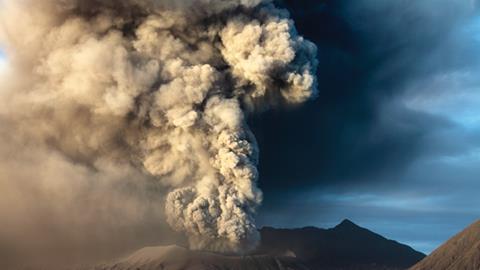
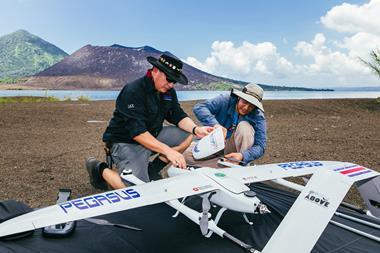
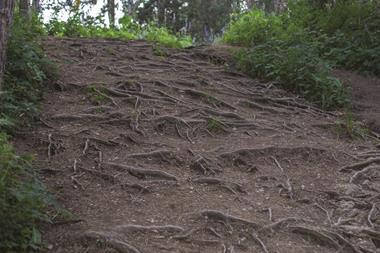

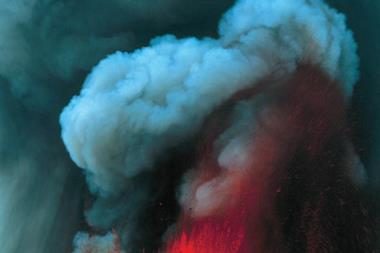
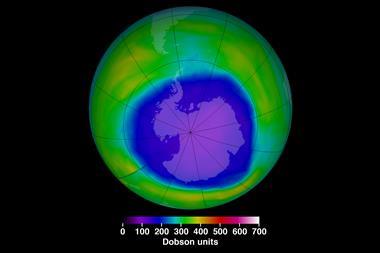
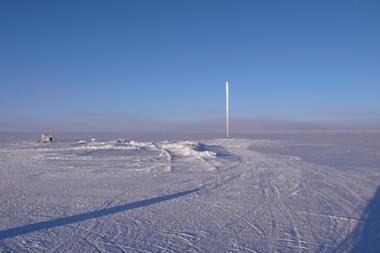






No comments yet